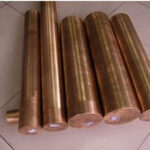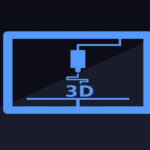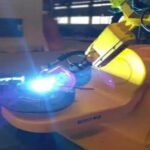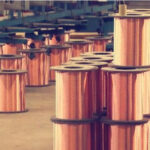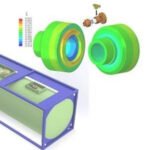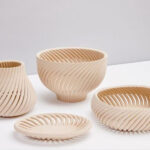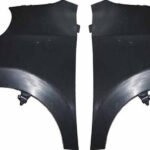Plastic material used to machining medical parts
Table of Contents
| In the medical parts processing industry, plastics are often used as raw materials for further processing. Nowadays, there are many kinds of plastics on the market, so what kind of plastic should be selected when machining medical parts? |
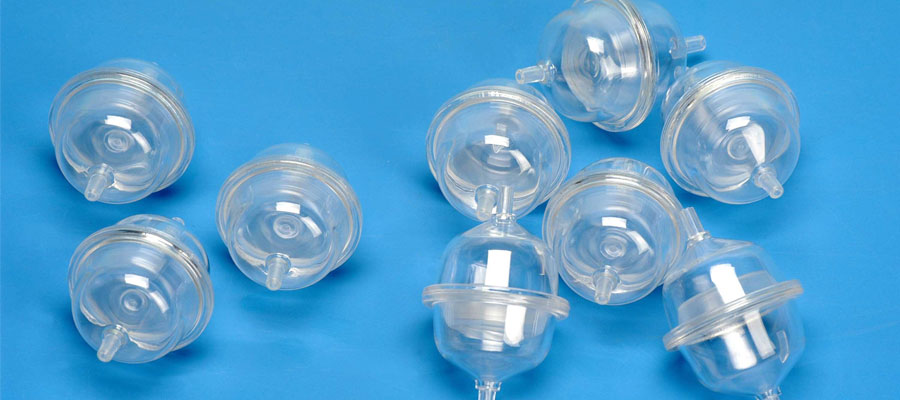
1.ABS plastic
ABS parts manufacturing process: CNC machining / Shouban production / Injection / Blister / 3D printing
ABS material characteristics and applications
ABS resin is one of the five major synthetic resins. It is excellent in impact resistance, heat resistance, low temperature resistance, chemical resistance and electrical properties. It is also easy to process, stable in product size, and has good surface gloss. It is easy to apply. Coloring, it can also be used for secondary processing such as surface metallization, electroplating, welding, hot pressing and bonding. It is widely used in industrial fields such as machinery, automotive, electronic appliances, instrumentation, textile and construction. Wide range of thermoplastic engineering plastics. ABS is usually a pale yellow or milky white granule amorphous resin. ABS is one of the most widely used engineering plastics.
2.nylon PA6
Nylon manufacturing process: CNC machining / Shouban production / Injection / 3D printing
Nylon PA6 characteristics and applications
This material has the most comprehensive properties including mechanical strength, stiffness, toughness, mechanical shock absorption and wear resistance. These properties, combined with good electrical insulation and chemical resistance, make nylon 6 a “universal grade” material for the manufacture of mechanical structural parts and maintainable parts.
3.nylon PA66
Nylon PA66 manufacturing process: CNC machining / Shouban production / Injection / 3D printing
Nylon PA66 characteristics and applications
Compared with nylon 6, its mechanical strength, stiffness, heat resistance and wear resistance, and creep resistance are better, but the impact strength and mechanical shock absorption performance are degraded, which is very suitable for automatic lathe machining. PA66 is more widely used in the automotive industry, instrument housings and other products that require impact resistance and high strength.
4.nylon PA12
Nylon PA12 manufacturing process: CNC machining / Shouban production / Injection / 3D printing
Nylon PA12 characteristics and applications
The scientific name of PA12 is polydodelactam, also known as nylon 12. The basic raw material for its polymerization is butadiene, which can depend on petrochemicals. It is a semi-crystalline-crystalline thermoplastic material. Its characteristics are similar to those of PA11, but the crystal structure is different. PA12 is a good electrical insulator and, like other polyamides, does not affect insulation properties due to moisture. It has good impact resistance and chemical stability. PA12 has many improved varieties in terms of plasticizing properties and reinforcing properties. Compared to PA6 and PA66, these materials have a lower melting point and density and have a very high moisture regain. PA12 is not resistant to strong oxidizing acids. Typical applications for nylon 12: water gauges and other commercial equipment, cable jackets, mechanical cams, sliding mechanisms, photovoltaic backings and bearings.
5.PVC
PVC manufacturing process: CNC machining / Shouban production / Injection molding
PVC characteristics and applications
Polyvinyl chloride, referred to as PVC (Polyvinyl chloride), is a vinyl chloride monomer (VCM) in the initiator of peroxides, azo compounds, or free radical polymerization under the action of light and heat. Polymerized polymer. The vinyl chloride homopolymer and the vinyl chloride copolymer are collectively referred to as vinyl chloride resins. PVC was once the world’s largest production of general-purpose plastics, and it is widely used. It is widely used in building materials, industrial products, daily necessities, floor leather, floor tiles, artificial leather, pipes, wires and cables, packaging films, bottles, foam materials, sealing materials, fibers, etc.
6.POM steel
POM manufacturing process: CNC machining / Shouban production / injection molding
POM features and applications
POM is a tough, resilient material that retains excellent creep resistance, geometric stability and impact resistance even at low temperatures. POM has both homopolymer materials and copolymer materials. The homopolymer material has good ductility and fatigue strength, but is not easy to process. The copolymer material has good thermal stability, chemical stability and is easy to process. Whether a homopolymer material or a copolymer material, it is a crystalline material and does not easily absorb moisture. The high degree of crystallization of POM results in a relatively high shrinkage rate of up to 2% to 3.5%. There are different shrinkage rates for a variety of different reinforced materials. POM has a very low coefficient of friction and good geometric stability, making it ideal for gears and bearings. Because it also has high temperature resistance, it is also used in pipeline devices (valves, pump housings), lawn equipment, etc. Audio equipment such as video recorders, CDs, LDs, MD players, radios, headphones, stereos, OA machines such as printers, keyboards, CD-ROM drives, household appliances such as washing machines, dryers, hair dryers, seat belt mechanical parts, exterior doors Automotive parts such as handles, mirrors, and engine rooms, as well as precision parts such as cameras and clocks, as well as molding materials such as building materials and game machines.
7. Bakelite
Bakelite manufacturing process: CNC machining / Shouban production
Bakelite characteristics and applications
Bakelite is the first plastic to be put into industrial production. It has high mechanical strength, good insulation, heat resistance and corrosion resistance, so it is often used in the manufacture of electrical materials, such as switches, lamp holders, earphones, telephone casings, instrument cases, etc. .
8.Plexiglass PMMA acrylic
Acrylic manufacturing process: CNC machining / Shouban production / Injection / Blister
Acrylic properties and applications
Polymethyl methacrylate is a popular name, abbreviated PMMA. The chemical name of the polymer transparent material is polymethyl methacrylate, which is a polymer compound obtained by polymerizing methyl methacrylate. It is an important thermoplastic that was developed earlier. The plexiglass is divided into four types: colorless transparent, colored transparent, pearlescent, and embossed plexiglass. Plexiglass is commonly known as Acrylic, Zhongxuan Acrylic, and Acrylic. Plexiglass has good transparency, chemical stability, mechanical properties and weather resistance, easy dyeing, easy processing, and beautiful appearance. Plexiglass is also called gelatin glass, acrylic and so on. This material is widely used in the production of advertising light boxes, nameplates, etc.
9. PC
PC manufacturing process: CNC machining / Shouban production / Injection / Blister
PC features and applications
Polycarbonate (abbreviated as PC) is a polymer having a carbonate group in a molecular chain, and can be classified into aliphatic, aromatic, aliphatic-aromatic and the like depending on the structure of the ester group. Among them, the aliphatic and aliphatic-aromatic polycarbonates have low mechanical properties, which limits their application in engineering plastics. The three application fields of PC engineering plastics are glass assembly industry, automobile industry and electronics and electrical industry, followed by industrial machinery parts, optical discs, packaging, computers and other office equipment, medical and health care, film, leisure and protective equipment.
10.PP
PP manufacturing process: CNC machining / Shouban production / Injection molding
PP characteristics and applications
Polypropylene is a thermoplastic resin obtained by polymerizing propylene. The relative density is only 0.89-0.91, which is one of the lightest varieties in plastics. Due to the high degree of crystallinity, this material has excellent surface stiffness and scratch resistance. There is no environmental stress cracking problem in PP.
11. PPS
PPS manufacturing process: CNC machining / Shouban production
PPS characteristics and applications
PPS plastic (polyphenylene sulfide) is a thermoplastic special engineering plastic with excellent comprehensive performance. Its outstanding features are high temperature resistance, corrosion resistance and superior mechanical properties. Electrical insulation (especially high-frequency insulation) is excellent, white is hard and brittle, and there is a metal sound on the ground. The light transmittance is second only to plexiglass, and the coloring resistance is good and the chemical stability is good. It has excellent flame retardancy and is non-combustible plastic. The strength is general, the rigidity is very good, but the quality is brittle, easy to produce stress and brittle fracture; it is not resistant to organic solvents such as benzene and gasoline; the long-term use temperature can reach 260 degrees, and it is stable in 400 degrees of air or nitrogen. After being modified by adding glass fiber or other reinforcing materials, the impact strength can be greatly improved, heat resistance and other mechanical properties are also improved, the density is increased to 1.6-1.9, and the molding shrinkage is as small as 0.15-0.25%. For the manufacture of heat-resistant parts, insulation parts and chemical instruments, optical instruments and other parts.
12. PEEK
PEEK manufacturing process: CNC machining / Shouban production
PEEK characteristics and applications
Polyetheretherketone (PEEK) resin is a special engineering plastic with excellent performance. It has more significant advantages than other special engineering plastics. It has high temperature resistance of 260 degrees, excellent mechanical properties, good self-lubricating property and chemical corrosion resistance. , flame retardant, peeling resistance, wear resistance, not resistant to strong nitric acid, concentrated sulfuric acid, radiation resistance, superior mechanical properties can be used in high-end machinery, nuclear engineering and aviation technology.
13.Teflon PTFE
Teflon manufacturing process: CNC machining / Shouban production
Teflon properties and applications
Polytetrafluoroethylene, English abbreviation for PTFE, (commonly known as “Plastic King, Hara”), trade name Teflon, in China, due to pronunciation, the “Teflon” trademark is also known as “Teflon” “Dragon”, “Teflon”, “Tiefulong”, “Teflon”, “Teflon”, etc. are all transliteration of “Teflon”. Products of this material are generally referred to collectively as “non-stick coatings”; they are synthetic polymeric materials that use fluorine to replace all of the hydrogen atoms in the polyethylene. This material is resistant to acids and bases and to various organic solvents and is almost insoluble in all solvents. At the same time, PTFE has the characteristics of high temperature resistance, its friction coefficient is extremely low, so it can be used as a lubricant, and it has become an ideal coating for the inner layer of non-stick pan and water pipe.
14.photosensitive resin
Photosensitive resin manufacturing process: 3D printing
Photosensitive resin properties and applications
The material used for photocuring rapid prototyping is a liquid photocurable resin, or liquid photosensitive resin, mainly composed of an oligomer, a photoinitiator, and a diluent. In the past two years, photosensitive resin is being used in the emerging industry of 3D printing, which is favored and valued by the industry because of its excellent characteristics.
15. polyurethane PU
PU manufacturing process: hand-made multi-mold processing / injection molding
PU characteristics and applications
Polyurethane is a kind of polymer containing -NHCOO-repeating structural unit in the main chain. The English abbreviation PU, including rigid polyurethane plastic, flexible polyurethane plastic, polyurethane elastomer and other forms, is divided into thermoplastic and thermosetting. The raw materials are generally presented in a resin state.
16.rubber
Rubber manufacturing process: hand-made multi-mold processing / injection molding
Rubber properties and applications
Rubber: A highly elastic polymer material with reversible deformation. It is elastic at room temperature, and can produce large deformation under the action of a small external force, and can be restored to its original state after removing external force. Rubber is a completely amorphous polymer with a low glass transition temperature (T g) and a large molecular weight of more than several hundred thousand.
17.PET
PET manufacturing process: CNC machining / Shouban production / Injection molding
PET characteristics and applications
Polyethylene terephthalate is the most important type of thermoplastic polyester, commonly known as polyester resin. It is obtained by transesterification of dimethyl terephthalate with ethylene glycol or esterification of terephthalic acid with ethylene glycol to synthesize bishydroxyethyl terephthalate, followed by polycondensation. Together with PBT is collectively referred to as thermoplastic polyester, or saturated polyester. Excellent physical and mechanical properties in a wide temperature range, long-term use temperature up to 120 ° C, excellent electrical insulation, even at high temperature and high frequency, its electrical performance is still good, but poor corona resistance, anti-corrosion Creep resistance, fatigue resistance, abrasion resistance, and dimensional stability are all good.
18. PBT
PBT manufacturing process: CNC machining / Shouban production / Injection molding
PBT characteristics and applications
Polybutylene terephthalate, English name polybutylene terephthalate (referred to as PBT), belongs to the polyester series, which is composed of 1.4-pbt butanediol (1.4-Butylene glycol) and terephthalic acid (PTA) or p-phenylene. The formate (DMT) is polycondensed and formed into a milky white translucent to opaque, crystalline thermoplastic polyester resin via a mixing procedure. Together with PET is collectively referred to as thermoplastic polyester, or saturated polyester. Household appliances (food processing blades, vacuum cleaner components, electric fans, hair dryer housings, coffee utensils, etc.), electrical components (switches, motor housings, fuse boxes, computer keyboard keys, etc.), automotive industry (heatsink windows , body panels, wheel covers, door and window components, etc.).
Link to this article: How to choose the plastic material used for medical parts machining?
Reprint Statement: If there are no special instructions, all articles on this site are original. Please indicate the source for reprinting:https://www.cncmachiningptj.com/,thanks!
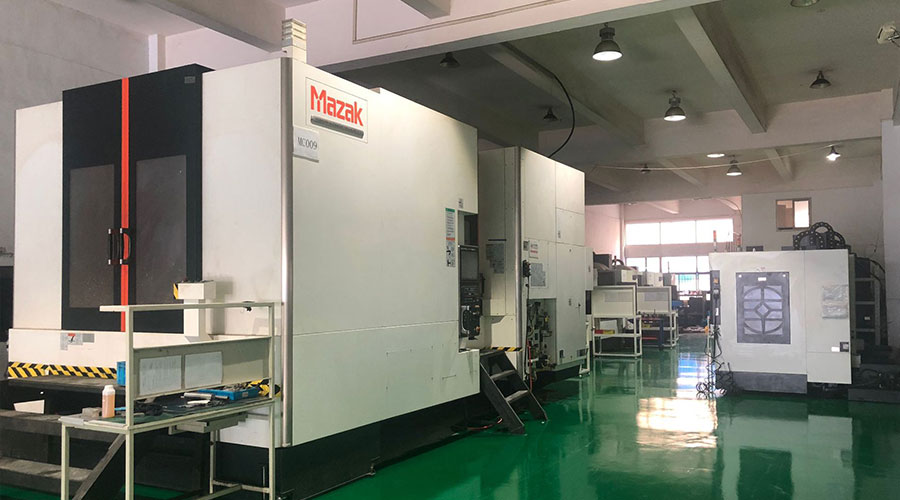 PTJ® provides a full range of Custom Precision cnc machining china services.ISO 9001:2015 &AS-9100 certified. 3, 4 and 5-axis rapid precision CNC machining services including milling, turning to customer specifications,Capable of metal & plastic machined parts with +/-0.005 mm tolerance.Secondary services include CNC and conventional grinding, drilling,die casting,sheet metal and stamping.Providing prototypes, full production runs, technical support and full inspection.Serves the automotive, aerospace, mold&fixture,led lighting,medical,bicycle, and consumer electronics industries. On-time delivery.Tell us a little about your project’s budget and expected delivery time. We will strategize with you to provide the most cost-effective services to help you reach your target,Welcome to Contact us ( [email protected] ) directly for your new project.
PTJ® provides a full range of Custom Precision cnc machining china services.ISO 9001:2015 &AS-9100 certified. 3, 4 and 5-axis rapid precision CNC machining services including milling, turning to customer specifications,Capable of metal & plastic machined parts with +/-0.005 mm tolerance.Secondary services include CNC and conventional grinding, drilling,die casting,sheet metal and stamping.Providing prototypes, full production runs, technical support and full inspection.Serves the automotive, aerospace, mold&fixture,led lighting,medical,bicycle, and consumer electronics industries. On-time delivery.Tell us a little about your project’s budget and expected delivery time. We will strategize with you to provide the most cost-effective services to help you reach your target,Welcome to Contact us ( [email protected] ) directly for your new project.
Link to this article:How to choose the plastic material used for medical parts machining?
Reprint Statement: If there are no special instructions, all articles on this site are original. Please indicate the source for reprinting.:Cnc Machining,Thank!^^

